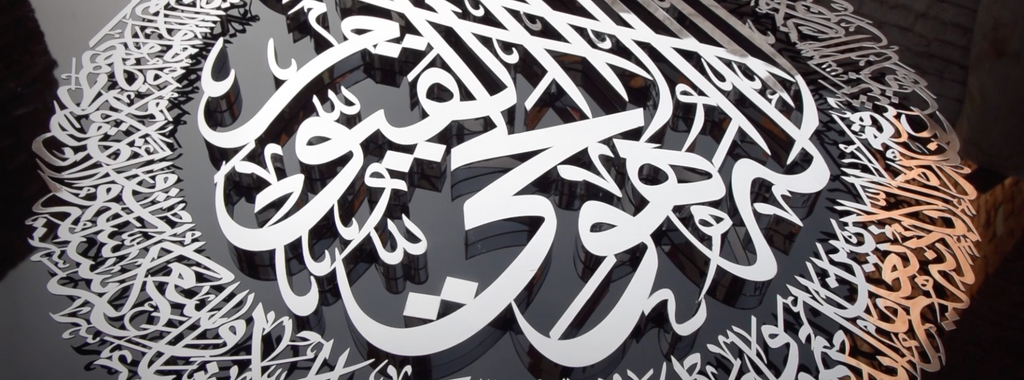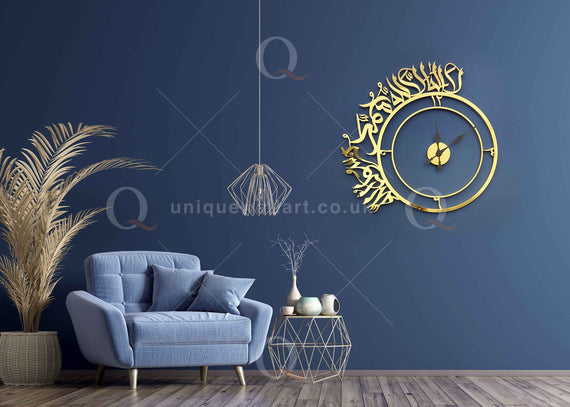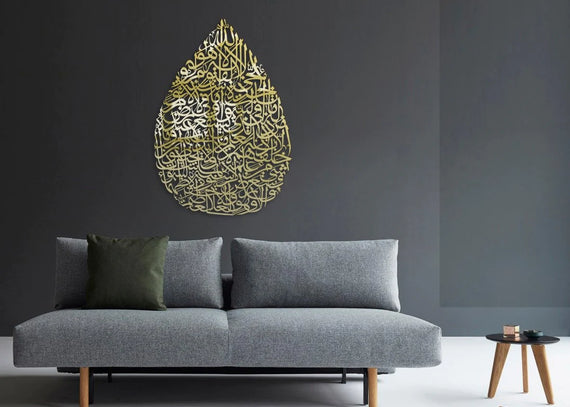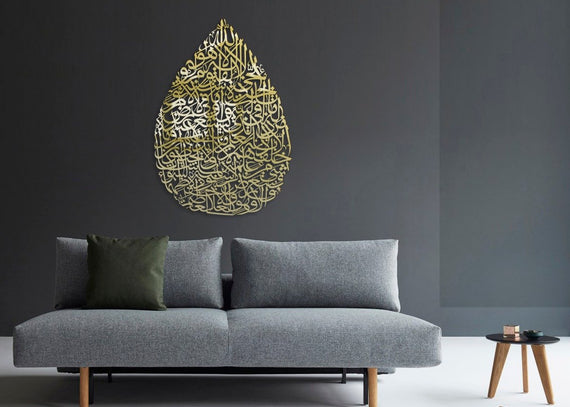Islamic wall art calligraphy is the artistic practice of handwriting and calligraphy, based on the alphabet on lands that have a common Islamic cultural heritage. It includes Arabic calligraphy, Ottoman, and Persian calligraphy. It is known in Arabic as the Islamic hut, which means Islamic line, design, or construction.
Development of Islamic wall art calligraphy is strongly tied to the Qur'an. It was also argued that Islamic calligraphy was less motivated by icon phobia (since, in reality, the images were by no means absent in Islamic art) than the central meaning of the concept of writing and written text in Islam.
Tools and the Media of Islamic Wall Art Calligraphy
The traditional tool of Islamic calligraphers is kalam. A pen usually made from dried cane or bamboo; ink is often coloured and selected so that its intensity can vary significantly so that large strokes of compositions can be very dynamic in their effect. Many styles are also now written with a metal like stainless steel.



This Islamic calligraphy, In other words, is also used on a wide range of decorative media other than paper, such as tiles, vessels, carpets, and inscriptions. Before paper appeared, papyrus and parchment were used for writing. Therefore Stainless Steel Calligraphy now is the most beautiful design for Wall Décor.
Styles of Islamic Wall Art Calligraphy
Kufic font, The style emphasizes the hard and angular touches that appear as a modified form of the old Nabatean script. This style later evolved into several varieties, including floral, layered, wicker or interlaced, border, and square kufi. This was the main script used to copy the Qur'an.
After that, NaskhUsing italic script coexisted with Kufic term papers were usually used for informal purposes. Similarly, A scenario was needed to match the pace of conversions, and a well-defined italics called Naskh. The script is the most common among other styles used in the Qur'an, official decrees, and private correspondence. It became the basis of modern Arabic print.
Variation Naskh includes:
Tulut is designed as a display script to decorate individual biblical objects. Letters have long vertical lines with broad spacing. The name meaning "third" refers to the x-height, which is one-third of "alif."
Patch line is a line used by many people in their daily scriptures, one of the sources of Arabic fonts and the lightest, distinguished by its beauty and integrity, easy to read and write, and also after difficulties and depends on the point is written or written well.
The phrase is written in the patch: The line is used to write books, newspapers, magazines, banners, and propaganda. The advantage of this line is that the calligraphers retained it, did not withdraw other lines from it, or did not develop it on different lines other than the base, as in the Persian line, Divani and Kofi, and a third and others.
In addition, the Copy line in Islamic wall art calligraphy is one of the closest lines on the Tulut line. This is one of the branches of the third, but it is simpler and less complex. This is a copy of the Holy Quran. This is a beautiful line copied by many books of Arabic manuscripts and possibly a composition, but less than the line of the third. This line differs in the Holy Quran lines as it is found that the most apparent copies of the Quran in letters and reading are, as a rule, proverbs and paintings in mosques and museums.
In the modern World:
Now a day’s Islamic Calligraphy wall art is in 3D Stainless steel design which makes your home beautiful.
3D MashAllah Arabic Calligraphy Wall Art
Ayat ul Kursi Plated Stainless Steel Calligraphy
Unique Wall Art working on Islamic Calligraphy with beautiful stainless steel Calligraphy design for home decoration. These are mentioned below:






